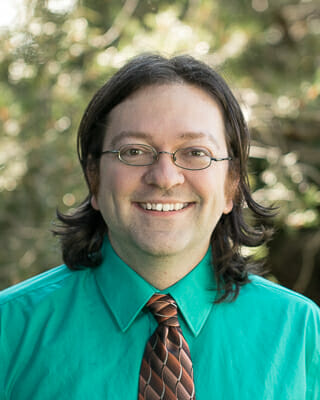
Recently, the Rady School of Management at the University of California, San Diego, announced a $100 million transformational gift from local philanthropist Ernest Rady. It is the largest single commitment ever made to a business school the size of the Rady School, and the gift is intended to empower the Rady School to engage in competitive recruitment of top faculty on a par with Harvard, Stanford, and other major US business schools.
At AI, we had the opportunity to speak with both the Rady School’s dean, Robert Sullivan, and the donor, to get a unique dual perspective into the transformational gift. What we learned matches what we have seen with many other transformational gifts. These gifts are a product of:
- A shared vision between school and community leaders
- A deep, trusting, and longstanding relationship between the donor and the school’s academic leadership
- A clear business case to the donor for how the gift will transform both school and community
1. A Shared Vision
The story of the Rady School is a compelling one. The school was established in 2003 in the midst of the California/Silicon Valley recession; its dean, Robert Sullivan, arrived from a career leading long-standing business schools at UNC-Chapel Hill and Carnegie Mellon. Sullivan came to UC San Diego with a very specific vision for the school — that it would provide a hub for entrepeneurship and would empower small business growth in the life-sciences, genomics, and technology-rich environment of San Diego. An early naming gift from Ernest Rady in 2004 allowed the then-newborn school to establish facilities and hire its first faculty.
Over the past decade, the school has been incredibly successful. With the Rady School’s focus on translating science and technology discoveries into the creation of companies and jobs, and with a student body with advanced degrees in the sciences, there are now 83 companies–most of them in the San Diego area–where at least one founder is a graduate of the Rady School. According to Sullivan, in the last year alone Rady alumni participated in business deals with a combined economic impact of nearly $2 billion.
The secret to this success has been a shared vision between the academic dean and community leaders. “Everything we’ve put together in ten years,” Sullivan emphasizes, “has come about because the San Diego, high-tech, entrepreneurial community wanted this school.”
Sullivan calls Ernest Rady’s initial naming gift a “toss of the dice” that Rady undertook because he believed in this vision. “For ten years, he has been deeply involved in the school, and the result of that initial investment was that the rest of the community also wanted to be part of this school. We raised $122 million from 2004-2013 from the community to allow ourselves to put up our privately-funded facilities, recruit faculty, and establish endowed chairs. Rady made this recent gift because he wants to ensure the long-term sustainability of this school. He wants us to be market-competitive in recruiting faculty.”
When we asked Ernest Rady for his donor’s perspective on fundraising, he remarked, “Fundraising is an industry. Now that I’ve reached the ripe old age of 77, I am the target or object of their affections. I always try to be polite to fundraisers; they have a job to do. But fundraising is about a relationship. Gift officers have to be thoughtful of the relationship and the cause. I know what I want to do. I will make my own mind up. I want to do something significant.”
As Jim Langley argues in his books want to give. Donors don’t give transformational gifts because you need their funds; they give because they are inspired by a vision of what they can help your institution do in the world.
2. A Relationship
It’s about the relationship.
One of the most significant challenges to an institution’s ability to bring in transformative gifts is a paucity of long-term relationships. Few gift officers and few academic deans remain in one position at one school for a decade, as Robert Sullivan has done. That makes it difficult to establish personal and high-trust relationships between potential major donors and an institution’s academic leadership.
Yet it is those very relationships that bring transformative gifts to the institution.
“Good development is almost invisible,” Sullivan remarks. “The fundraisers’ work is behind the scenes, facilitating. People give to people. The cultivation over the past decade has all been the relationship between Ernest and the leaders of this school, and the shared vision we developed. Ernest has confidence in the leadership of this school. This is about building a real relationship over time, with real trust. It means that when you tell a donor you’ll do something, you’re sincerely committed to doing it. Ernest and I are friends. He can trust me. I trust him.”
Ernest Rady seconds the importance of this relationship. “I trusted that Sullivan could do what he said he could do,” he says, speaking of his first encounter with the dean over a decade ago. “Sullivan is an exceptional educator and has won the admiration and respect of myself and the entire community.”
There is a myth in the fundraising world that the charismatic, operating-solo gift officer can go out and bring in major gifts from philanthropists who are eager to give in response to the institution’s need. But for your institution to build a sustainable future, you need close relationships between your academic leaders and your community and business leaders. It is these relationships — not those between gift officers and prospects — that ultimately matter.
A DIFFERENT APPROACH TO THE TRANSFORMATIONAL GIFTS TEAM
In another example of how to think differently about transformational gifts, Cornell University has built their entire transformational gifts team by tapping their most tenured staff members from across campus and asking them to serve as principal gift officers. The philosophy behind the effort is that these are the people who know the institution (and likely their most loyal donors) best and can speak to the institution’s vision for the future.
3. A Business Case
“It’s becoming more and more necessary,” Sullivan stresses, “to talk about what individuals get back from any investment in a cause. No individuals who are successful or wealthy feel that they have ‘too much money’; the situation isn’t that the money is too heavy for them and they want to be relieved of that burden! What they do want is to make a smart investment. We need to articulate why any activity with us is the best use of their time and resources. What do their family and their community get back in the long term? It is critical to demonstrate this.
“Rady often talks about how this return on investment has become a ‘return on life’ for him. That return can’t be pie-in-the-sky; it has to be something he can listen to and see, something his children and grandchildren can look at to see that their family has really made a difference in San Diego.”
At Academic Impressions conferences, some of the experts we have brought to speak with gift officers advocate building a comprehensive business case, with both a powerful story and specific numbers. We hear gift officers questioning whether they need to take something that specific to a donor. Sullivan’s answer: “Yes. You absolutely do.”


